- Home
- >
- Geometry
JUMP TO TOPIC
Geometry
Geometry is the study of points, lines, planes, and anything that can be made from those three things. Geometry includes everything from angles to trapezoids to cylinders.
There is a lot of overlap with geometry and algebra because both topics include a study of lines in the coordinate plane. Geometry also provides the foundation for trigonometry, which is the study of triangles and their properties. Formulas from geometry such as area and volume are also essential for calculus.
This resource guide begins with terminology that appears throughout topics and subtopics. It then discusses angles and closed, two-dimensional shapes before moving onto three-dimensional shapes and their properties.
The subject concludes with methods for constructing geometric objects with a ruler and compass and graphing them in the coordinate plane.
Basics of Geometry
Before moving onto other topics, it is important to brush up on geometry terms and vocabulary.
- Basic Geometry Terms
- Pairs of Lines
Angles
An angle is formed by two rays that share a common endpoint. The distance between the two rays determines the measure of the angle. These angles form the basis of many geometric figures, most notably polygons.
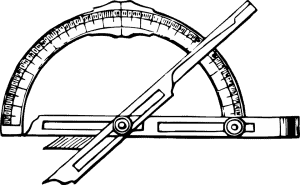
This section begins with an explanation of angles and how to measure them. It then explains different types of angles and concludes with a guide for solving for an unknown angle.
- Angles
- Measuring Angles
- Drawing Angles
- Pairs of Angles
- Types of Angles
- Complementary Angles
- Supplementary Angles
- Vertical Angles
- Corresponding Angles
- Alternate Interior Angles
- Alternate Exterior Angles
Triangles
For such simple shapes, triangles sure have a lot of properties! In fact, this topic only covers the basics of triangles. Trigonometry digs even deeper into the relationships between the sides and angles of different triangles.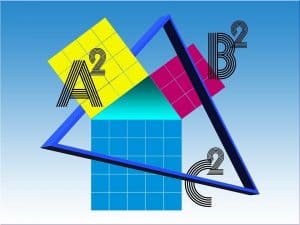
This section begins with the classification of triangles and how to find their area. It then discusses the Pythagorean Theorem and its properties.
This topic also explains triangle congruency and similarity and how to determine if two triangles are congruent or similar.
The section ends with a brief introduction to sines and cosines, which will be discussed more thoroughly in trigonometry.
- Types of Triangles
- Special Right Triangles
- 3 4 5 Triangle
- 45 45 90 Triangle
- 30 60 90 Triangle
- Area of Triangle
- Pythagorean Theorem
- Converse of the Pythagorean Theorem
- Pythagorean Triples
- Congruent Triangles
- SSS rule, SAS rule, ASA rule, AAS rule
- Hypotenuse Leg (HL)
- Similar Triangles
- Triangle Inequality
- Triangle Sum Theorem
- Interior Angles of a Triangle
- Exterior Angle Theorem
- Exterior Angles of a Triangle
- Angles of a Triangle
- Law of Sines or Sine Rule
- Law of Cosines or Cosine Rule
Polygons
Polygons are any closed figure with straight sides. Most people tend to think of triangles, squares, pentagons, and the like when they think of polygons. Concave shapes such as plus signs and arrows, however, are also considered polygons.
A study of these figures will often focus on quadrilaterals, four-sided figures.

This section explains polygons and their properties first. It then discusses the area of polygons generally and focuses on the area of different types of quadrilaterals.
Finally, the section explains how to find the perimeter or outside length of a polygon.
- Polygons
- Angles in Polygons
- Quadrilaterals
- Area of Polygons
- Area of Squares
- Area of Rectangles
- Area of Parallelograms
- Area of Triangles
- Area of Rhombus
- Area of Trapezoids
- Area of Shaded Regions
- Perimeters of Polygons
Circles
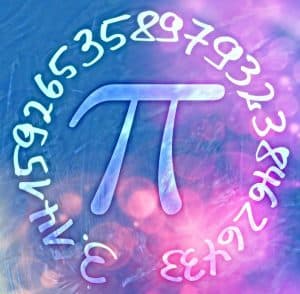
Circles are not polygons because they do not have straight edges. For this reason, along with the fact that they have so many unique properties, circles get their own section. Be ready to use the ratio of a circle’s circumference to its diameter, pi!
This section includes an introduction to circles followed by an explanation of circumference. It then explains how to find the area of a circle or part of a circle. This section also explains tangents.
The topic ends by explaining how degrees and radians can both be used to measure the arc length of a circle.
- Circles
- Parts of a Circle
- Circumference of a Circle
- Arc of a Circle
- Arc Length of a Circle in Radians
- Area of a Circle
- Area of a Sector
- Tangent to a Circle
- Degrees and Radians
Circle Theorems
In addition to basic properties of circles, there are many unique theorems that can be applied to circles. Many of them involve tangents, secants, and objects in circles.
This section begins by defining some of the objects that will be used in circle theorems, notably chords, angles, and intercepted arcs. It then introduces several circle theorems before explaining how to apply them to different circumstances.
- Chords of a Circle
- Intercepted Arcs
- The Inscribed Angle Theorem
- Thales’ Theorem
- Alternate Segment Theorem
- Quadrilaterals in Circles
- Angles in a Circle
Solid Geometry
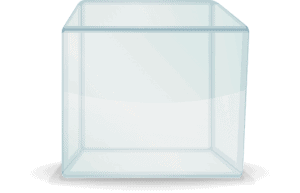
After finishing with two-dimensional figures, it’s time to move on to three-dimensional figures.
Solid geometry studies all three-dimensional objects, including cubes, pyramids, and cylinders. It also focuses on the properties of these objects.
This topic begins with the volume of different types of solids and then moves on to the surface area of different solids. It also explains nets, or two-dimensional shapes that can be folded into three-dimensional ones.
- Volume of Cubes
- Volume of Rectangular Prisms
- Volume of Prisms
- Volume of Cylinders
- Volume of Spheres
- Volume of Cones
- Volume of Pyramids
- Volume of Solids
- Surface Area of a Cube
- Surface Area of a Cuboid
- Surface Area of a Prism
- Surface Area of a Cylinder
- Surface Area of a Cone
- Surface Area of a Sphere
- Surface Area of a Pyramid
- Geometric Nets
- Surface Area of Solids
Geometric Formulas
The basic geometry formulas play an important role in upper level mathematics. Knowing how to find the area, surface area, and volume of objects is also critically important for word problems and applications.
This guide goes over those three formulas and then explains where they came from.
- Area of a Square
- Area of Rectangle
- Area of Parallelogram
- Area of Trapezoid
- Area of Triangle
- Area of Rhombus
- Area of Regular Polygon
- Area of Circle
- Area of Ellipse
Coordinate Geometry and Graphs
Up to this point, most geometry topics have been about geometric objects in a general sense. Points, lines, and two-dimensional objects, however can be placed in the xy-plane.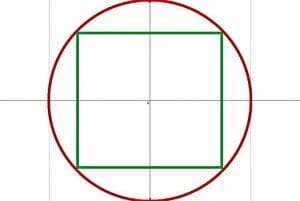
This section reviews the basics of coordinate geometry from algebra, beginning with properties of coordinate planes and instructions for graphing lines. It also explains how to calculate properties of line segments, such as distance and midpoints.
The topic reviews how to work with inequalities as well as more complicated functions such as quadratic and exponential functions in the coordinate plane.
- Coordinate Geometry
- Coordinate Plane
- Slope of a Line
- Equation of a Line
- Forms of Linear Equations
- Slopes of Parallel and Perpendicular Lines
- Graphing Linear Equations
- Slope and Intercept of a Linear Equation
- Midpoint Formula
- Distance Formula
- Graphing Linear Inequalities
- Linear Programming
- Graphing Quadratic Functions
- Graphical Solutions of Quadratic Equations
- Graphing Cubic Functions
- Graphing Exponential Functions
- Graphing Reciprocal Functions
Geometric Constructions
 A compass can be used to draw a circle, and a ruler can be used to draw a straight line. With these two tools, however, one can also create many other two-dimensional shapes, find exact angles, and locate the midpoint of an angle or line.
A compass can be used to draw a circle, and a ruler can be used to draw a straight line. With these two tools, however, one can also create many other two-dimensional shapes, find exact angles, and locate the midpoint of an angle or line.
This topic goes over the basics of geometric construction, including how to use it to make parallel and perpendicular lines. It also goes over how to make various angles and polygons with just a compass and ruler.
- Geometric Construction
- Construct a Line Segment
- Construct Perpendicular Bisector
- Construct a Perpendicular Line
- Construct Parallel Lines
- Construct a 60° Angle
- Construct an Angle Bisector
- Construct a 30° Angle
- Construct a 45° Angle
- Construct a Triangle
- Construct a Parallelogram
- Construct a Square
- Construct a Rectangle
- Locus of a Moving Point
Geometric Transformations
Transformations are ways of moving objects in the coordinate plane. These transformations can be described both graphically and algebraically.
This section begins by describing transformations in general before explaining translations, reflections, rotations, and dilations in greater detail.
Geometric Shapes
Here, we will explore the fantastic world of shapes, diving from the familiar realm of 2D figures to the exciting depth of 3D forms, and even catching a glimpse of the mysterious 4D constructs.
2-Dimensional Shapes (Planar)
3-Dimensional Shapes (Solids)
- Sphere
- Cylinder
- Cone
- Prism
- Rectangular Prism
- Triangular Prism
- Pentagonal Prism
- Pyramid
- Cube
- Cuboid
- Torus
- Tetrahedron
- Octahedron
- Dodecahedron
- Icosahedron
4-Dimensional Shapes
- Tesseract (4-Dimensional equivalent of a cube)
- 4-Dimensional Sphere (Also called a Hypersphere)
Shapes in Non-Euclidean Geometries
- Hyperbolic Paraboloid
- Elliptic Paraboloid
- Hyperboloid
- Moebius Strip
- Klein Bottle
